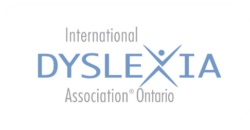How Learning Happens is broken down into 28 short chapters, each one focusing on an important element of educational research. The format of each chapter with consistent sections (Why you should read this article, Abstract of the article, The article, Conclusions/implications of the work for […]
This week, Kate chats with Dr. Deb Glaser about the second edition of Next STEPS for Literacy Instruction, co-authored with Dr. Susan Smartt. Kate and Deb unpack how to use valid and reliable assessments to shape effective literacy instructions, particularly through the Next STEPS framework: […]
Passionate about integrating the science of learning into your pedagogical practice? Catch up with the materials and recordings from Jim Hewitt and Nidhi Sachdeva’s series, focusing on selected chapters from How Learning Happens by Paul Kirschner and Carl Hendrick. The series focuses on six theoretical foundations […]
Dr. Anita Archer models explicit instruction across multiple content areas (background knowledge, comprehension, multisyllabic word reading, vocabulary, etc.). Each video has an accompanying viewer guide.
Dr. Anita Archer models explicit instruction across multiple content areas (decoding, vocabulary, comprehension, writing, etc.). Each video has an accompanying viewer guide.
This facilitator’s guide is designed to assist professional learning communities (PLCs) in applying evidence-based strategies to help K-3 students acquire the language and literacy skills needed to succeed academically. This document is a support for educators watching the IES videos of foundational language and literacy […]
The Knowledge and Practice Standards define the knowledge and skills that all teachers of reading should possess to teach all students to read proficiently. These competencies can be used to guide professional development for educators.
Suivre une progression des apprentissages des correspondances graphophonémiques(ou lettres-sons) / phonographémiques (ou sons-lettres) fondée sur la science permet de contrôler le niveau de complexité qui caractérise le système alphabétique du français. Les connaissances du personnel enseignant sur l’enseignement explicite du principe alphabétique et des étapes qui suivent leur permettront de cibler des objectifs d’apprentissage clairs et précis quant à l’enseignement des correspondances lettres-sons (lecture) et sons-lettres
(écriture), soit en petits groupes, soit au niveau de la classe en entier.
Ce document nous montre l’ordre d’une leçon phonétique qui inclut un bref description de chaque étape. Adaptation de la méthode utilisée en anglais par The Reading Clinic, Kingston Ontario.
“Lorsque vient le temps d’introduire un nouveau graphème, il s’agit de commencer la leçon avec une révision des cartes des leçons précédentes (voir l’exemple). On continue ensuite en introduisant un nouveau graphème qui sera ajouté au paquet de cartes”.
Graphème : la lettre écritePhonème : le son d’une lettre
In this episode of the popular Reading Road Trip podcast, Dr. Holly Lane, the Director of the University of Florida Literacy Institute (UFLI), unpacks key considerations for teaching foundational reading and writing skills.
Explicit Instruction expert, Dr. Anita Archer, provides the rationale and overview of explicit instruction and its benefit for students. Archer provides a quick 5 minute overview of what Explicit Instruction is and isn’t, with concise and kind language. This resource can be used to for professional development and to begin discussion between educators on Explicit Instruction.
This webinar will support educators in determining oral reading fluency goals, specifically for accuracy and rate, and how to provide instruction for these goals in a small group setting. Michael Hunter provides examples of assessment with a focus on accuracy, error tracking using decodable texts, and how to provide small group instruction to first improve accuracy followed by rate. This webinar will support educators of all grade levels working with students to improve oral reading fluency with connected text.




